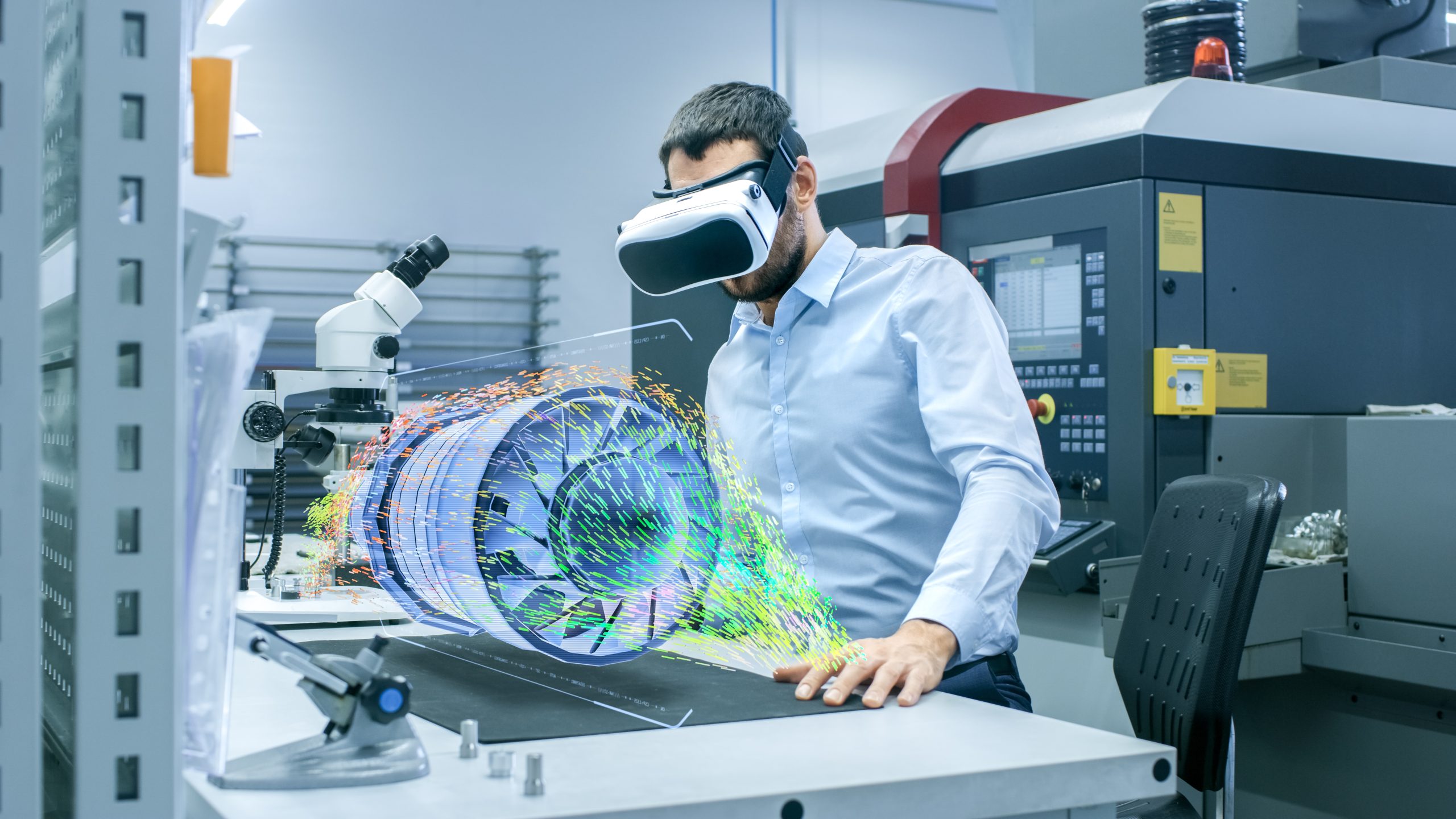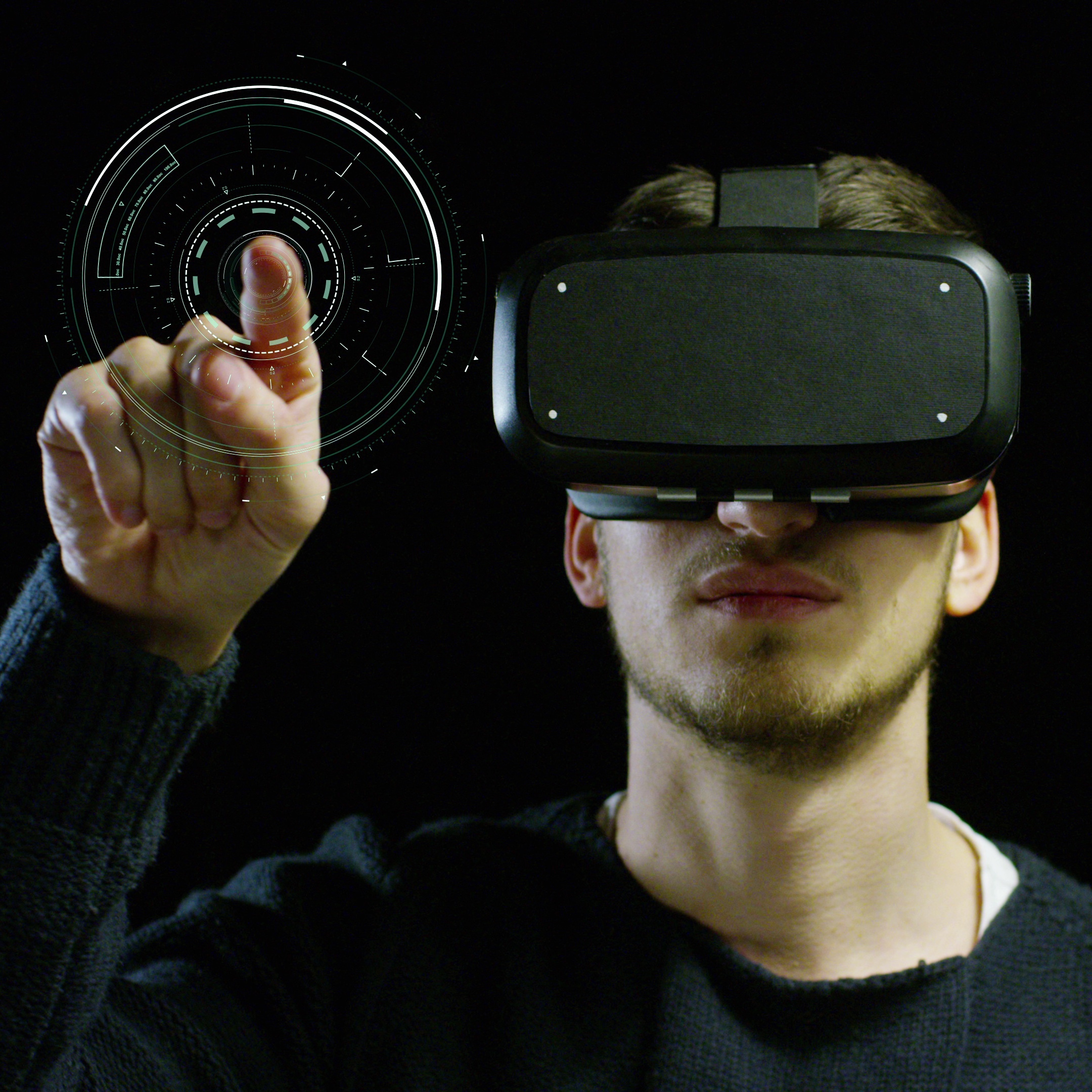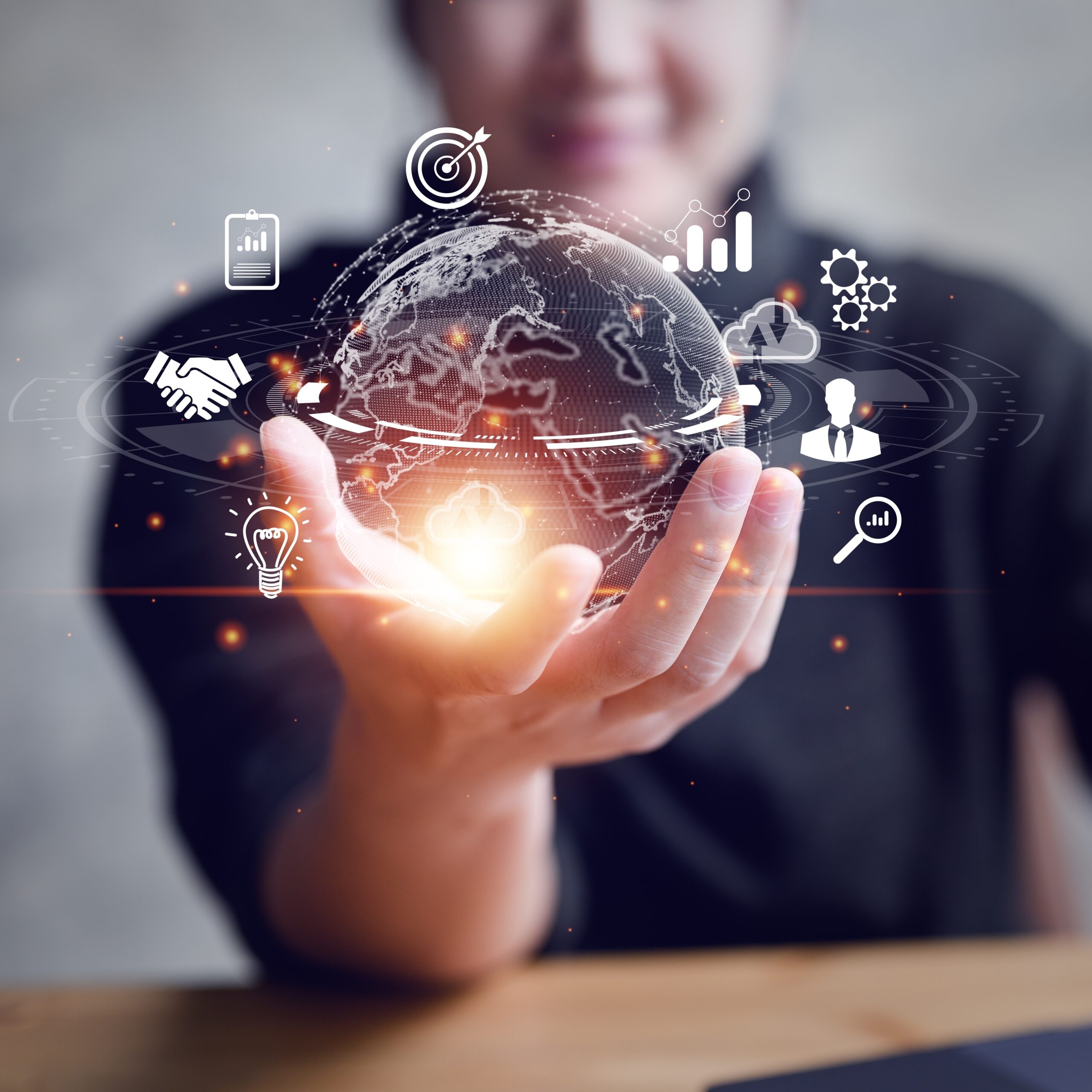Unlocking the Potential of Mixed Reality Solutions for Enhanced Business Growth
Unlocking the Potential of Mixed Reality Solutions for Enhanced Business Growth
Thriving in a world where the line between real and virtual is increasingly blurry means understanding the potential of the latest technologies to drive business growth. Augmented reality (AR) and virtual reality (VR) are concepts that have already permeated the consciousness of business leaders today. The newbie on the block is mixed reality (MR).
While AR overlays virtual elements in a real environment, VR deals with a completely digital environment where realistic interactions are possible. Mixed reality, on the other hand, is a technology that merges elements of both AR and VR. It seamlessly blends the physical and virtual worlds, allowing interaction of digital content and real-world environments. By displaying virtual elements on a transparent screen, like something you may have seen in movies such as Avatar, Top Gun, or Iron Man, Mixed reality enables users to interact and manipulate the virtual elements in real-time. With Mixed reality, you can interact with virtual elements like the physical world.
The latest immersive technology, Mixed Reality, uses advanced cloud computing, computer vision, display, graphical processing, and input systems to deliver rich, engaging experiences with a lasting impact. MR has paved the way for more intuitive and natural interactions associated with computers, humans, and environments.
So, how can Mixed reality catalyse your business’s growth? You can build highly personalized, interactive, informative, and immersive customer experiences, allow them to try products before buying, market products uniquely, and develop and test new products effectively. You can use MR to strengthen employee training, offer hands-on experiences, and teach skills faster. This cutting-edge technology can also enable real-time collaborations and help you provide technical support remotely. Your sales team can use MR to better understand customers and derive actionable insights.
Are you wondering if Mixed reality is the key to improving conversions and reaping greater profits while saving time? Read on.
The Rise of Mixed Reality
Celebrated science fiction writers like Jules Verne and H.G. Wells first toyed with the idea of mixed reality in the early 20th century. Then, during the 1950s, the Sensorama machine was born, which offered an immersive virtual experience through sound, touch, and sight. During the 1960s, Ivan Sutherland developed the first head-mounted display machine. The 80s and 90s witnessed AR and VR’s advent and rising popularity, so much so that the U.S. Air Force started experimenting with them. And today, tech giants like Google, Microsoft, and Apple are heavily invested in developing avant-garde mixed reality systems for endless possibilities.
In fact, according to a recent McKinsey report, multiple industries are increasingly adopting Mixed reality for its many advantages. Here are some use cases:
- Automotive and assembly – Product design, factory design, digital operations, remote assistance, training, safety
- Education – Learning and development, events and conferences, remote collaboration
- Healthcare – Telemedicine, surgical assistance, training, imaging, simulations
- Retail – Virtual showrooms, 3D catalogues, store design and layout, virtual try-ons, warehouse optimization
- Real estate – Interior design, floor and furniture planning, virtual property tours
- Construction – Virtual, immersive environments for architects
- Entertainment and media – Virtual events
So, it’s no wonder that the global demand for MR is likely to grow at a 35.6% CAGR by 2032, according to Persistence Market Research. MR’s worldwide sales revenue is expected to hit USD 24.6 billion by then.
These are some key trends:
- R&D investment will increase to devise newer MR applications
- Education, entertainment, gaming, and automotive sectors will especially drive MR’s demand
- MR will find more applications in healthcare
- Rising demand for MR glasses will boost sales revenue
- Increasing penetration of IoT and 5G will drive MR’s demand
MR technology is already working wonders for big brands like Ford. The company is using Microsoft HoloLens to visualize, ideate, and change virtual design elements as if they were parts of real vehicles. Designers wear MR headsets to experiment and iterate within minutes and hours, saving product development time and cost. Multiple team members across locations and time zones can also collaborate to develop better and smarter designs.
Immersive Experiences Unleashed: How Mixed Reality Enhances Customer Interactions
Leading brands use MR to create interactive and immersive experiences that customers will love and remember for a long time.
-
- IKEA Place App
It lets users visualize how furniture pieces or accessories will look and fit in their homes. It provides true-to-scale representations and precise measurements. Customers can use smartphones to explore the catalogue, choose pieces, and place them virtually in their homes. The app improves the shopping experience, engages customers better, helps them make informed decisions, and reduces the possibility of returns.
-
- Lowe’s Holoroom How To
This immersive MR experience allows customers to visualize how a home improvement project will likely go and make decisions accordingly. They can test power tools or learn how to install tiles or paint a room in a multi-sensory, virtual, and safe environment. Users can pick up necessary skills, gain confidence, and experience the DIY project’s sounds, smells, and visuals. They can even feel the vibration and weight of a drill!
-
- Toyota’s MR showroom
The brand offers a highly immersive virtual environment for customers to visualize, explore, and personalize their dream vehicles. Users can get a 360-degree view, check multiple configurations, change colours or add accessories. This way, Toyota endorses innovation while enhancing customer satisfaction.
Top brands use MR technology to deepen customer relationships and increase loyalty and advocacy.
-
- Nike’s MR showroom
Here, customers can virtually explore different styles, personalize designs and colours, and even try on shoes. 3D scanning and rendering create a customized and unique shopping experience, which builds trust and satisfaction and converts more prospects. Over time, satisfied customers help spread the word and add to the base of loyalists.
-
- Pokémon GO
This AR-powered mobile game keeps users hooked through new and exciting challenges, adventures, quests, contests, mysteries, features, and more. For instance, with every season’s change, players encounter different kinds of Pokémon in different parts of the world. This boosts engagement in new and seasoned players and works wonders for brand advocacy.
Catalyzing Business Growth: Mixed Reality in Action
Besides revolutionizing customer experiences, MR solutions can help a business grow faster by positively impacting operations, product development, and employee training. Here is a closer look:
-
- Boosting Efficiency and Productivity: The Role of Mixed Reality in Operations
Popular brands across sectors use MR to streamline workflows and processes, increasing operational efficiency. For instance, Audi enables offsite workers to visualize and assess 3D digital products in a hands-on and detailed way. Audi minimises errors and boosts productivity by overlaying digital instructions on real workstations.
Airbus uses Microsoft MR to streamline its aircraft fuselage inspection process, detect problems fast, and resolve them promptly. Workers can access instructions even when their hands are full, which reduces manufacturing time and enhances quality.
DHL has strengthened its warehouse operations with MR. By enabling hands-free order-picking, it has increased staff productivity and minimized errors. Smart glasses displaying relevant graphics help workers to access task information quickly.
-
- Innovation Unleashed: Empowering Product Development, Prototyping, and Ideation with Mixed Reality
We have already seen how Ford uses Microsoft HoloLens to ideate and develop stylish prototypes faster and accelerate the product development process. Toyota is using it, too, across different production stages. For instance, it employs MR to measure a vehicle’s paint thickness so that the final colour is consistent throughout. This has helped save a lot of time.
- Innovation Unleashed: Empowering Product Development, Prototyping, and Ideation with Mixed Reality
Volkswagen is using HoloLens to innovate its in-vehicle headsets. Volkswagen and Microsoft worked together to build a prototype that enables a car to display information in real-time on a connected headset. Volkswagen ID electric cars can already project data like navigation instructions and speed on the windshield for the ease of drivers.
-
- Empowering Employees: Mixed Reality’s Impact on Training and Skill Enhancement
Industry leaders are using MR to revolutionize employee training cost-effectively through immersive, hands-on experiences. For instance, Siemens uses MR to help technicians grasp even complex concepts quickly and retain information effectively. Electricians are learning to disassemble and reassemble expensive gears, decode labels on panels, and handle complicated wiring, in significantly less time. They work as a team to unlock new learning and growth opportunities in a safe environment.
Walmart is also leveraging MR to enable experiential learning for employees. This form of training is improving both knowledge retention and confidence levels. Moreover, employees can learn flexibly, practice repeatedly, learn through mistakes, and gain skills to tackle rare scenarios. Often, no teachers are required. This has resulted in major cost savings.
Industry Applications of Mixed Reality
MR is being used across industries because it innovates and transforms learning and training, product designing and prototyping, collaboration, operations, and customer experiences. Let’s dive deep into this.
-
- Revitalizing Retail
How Mixed Reality Transforms the Shopping Experience
We have already seen how Nike uses in-store MR to enable virtual try-ons and customization of shoes. This helps customers to interact with multiple pairs without going through the tedious process of trying on everything physically and buying something that resonates with their needs and tastes.
Sephora is also doing something similar, as its Virtual Artist app enables customers to experiment with different makeup items and create different looks without stepping inside a store. The app maps the user’s facial features correctly, which makes the experience engaging and satisfying.
-
- Building the Future: Mixed Reality’s Impact on Architecture, Construction, and Real Estate
MR is helping architects whip up immersive, interactive, and realistic walkthroughs of spaces yet to be constructed. It allows clients to visualize and understand a proposed environment in advance. For instance, for New York’s 520 West 28th Street residential building, Zaha Hadid Architects use completely immersive 3D environments.
Construction companies leverage MR to simulate different processes, identify safety hazards, and enhance site planning. For instance, Skanska Construction is testing their construction plans for Terminal B of LaGuardia Airport Central with MR.
Even those companies that supply tools for different construction stages are increasingly embracing MR. For example, Shaper Tools is redefining precise craftsmanship in woodworking with Origin. Origin uses active motion control and location tracking to enable constant real-time adjustments and ensure accurate freehand cutting.
MR is also revolutionizing real estate marketing as it is now possible to create realistic virtual property tours that give potential buyers a clear idea of what to expect before they invest.
-
- Healthcare Transformation: Mixed Reality’s Role in Medical Training and Patient Care
According to a Forrester study commissioned by Microsoft, using MR can diminish training time in healthcare by 30%, saving money. Medical staff can be trained more efficiently with the help of holographic, step-wise guidance. Doctors, nurses, and technicians can learn in a simulated, hands-on environment, pick up new tasks, and understand the workings of equipment without any supervisor.
Medical students can train better in surgery through MR, as it can project virtual elements on a real body and enable realistic interactions. It is more effective than practising on a corpse or watching a live surgery. Doctors can diagnose health issues and perform procedures more accurately and faster with MR, as they can view real-time patient data on the body itself.
For instance, AccuVein’s vein visualization system helps to accurately identify veins, bifurcations, and valves for optimal access. It helps avoid intravenous complications, improves catheter placement, and enhances patient care and safety.
Full Circle: The Transformational Journey of Mixed Reality in Business
In a dynamic and competitive new world, businesses need that special edge to survive and grow. And MR can help achieve just that. By blending physical and digital worlds in an immersive, interactive, and fascinating way, you can make customer journeys memorable and keep them returning for more. You can also connect better with clients, earn their trust, establish authority, and drive conversions innovatively.
MR is ideal for elevating employee training to an experiential, exciting, and simplified affair, which will help save both time and money. MR solutions can boost operational efficiency, streamline processes, improve productivity, and improve quality. You can safely and effectively experiment with new ideas and challenging scenarios without negatively impacting your bottom line.
Can’t wait to get started? Reach out to us at magineu, and we will help you transition to the era of MR-powered business success with our multi-sensory, immersive, interactive, and distraction-free experiences. Strengthen stakeholder relationships, spark outcome-oriented conversations, showcase your products in a new light, and create positive brand advocacy.
MR will help you scale heights you have only dreamed of before.



